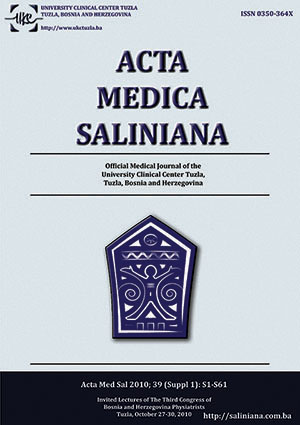
Lymphedema in Chronic Venous Insufficiency and Physical Procedures
Abstract
Lymphedema is difficult, chronic, progressive, and prolonged illness with an uncertain therapeutic outcome. Lymphedema in chronic venous insufficiency (CVI), is by its ethiology a secundary illness, resulting from the dysfunction of the lymphatic and depending on the degree of CVI. This lymphedema can be transitory or persistent, acute or chronic with or without pathological changes in skin. CVI lymphedema occurs as a result of venous hypertension i.e. pathological reflux of venous blood and an increase in the mean capillary pressure in microcirculation of skin venules, which causes the venous route. The venous route impedes lymph reabsorption which upon the exhaustion of compensatory mechanisms leads to the lymph route and the occurrence of clinical lymphedema. Lymphedema therapy in CVI is directly dependent on the treatment of CVI, but to date these disorders are treated but not cured and it is correct to talk about treatment or help. Physical treatments include the application of: physical procedures such as vacusac, vasculator, magnetic, electrical, dosed kinezitherapy, laser, hyperbaric oxygen therapy (HBOT), thermomineral water of indifferent water temperature. Physical therapy contributes to the improvement and development of collateral flow and improved venous drainage with venous insufficiency. Clinically there is decrease in edema, improved trophic, reduced hyperpigmentation, reductions in dermatoflebosclerotic changes, reduced pain which ultimately improves the quality of life of these patients.
Keywords
lymphedema; chronic venous insufficiency; physical procedures
DOI: 10.5457/ams.v39i1 Suppl..197
